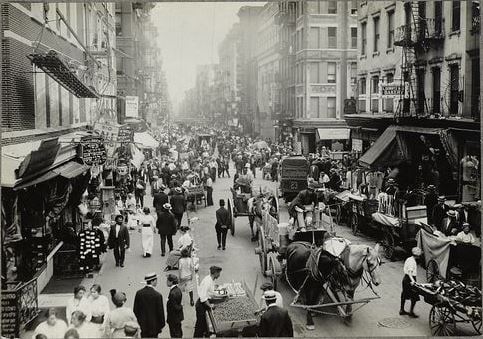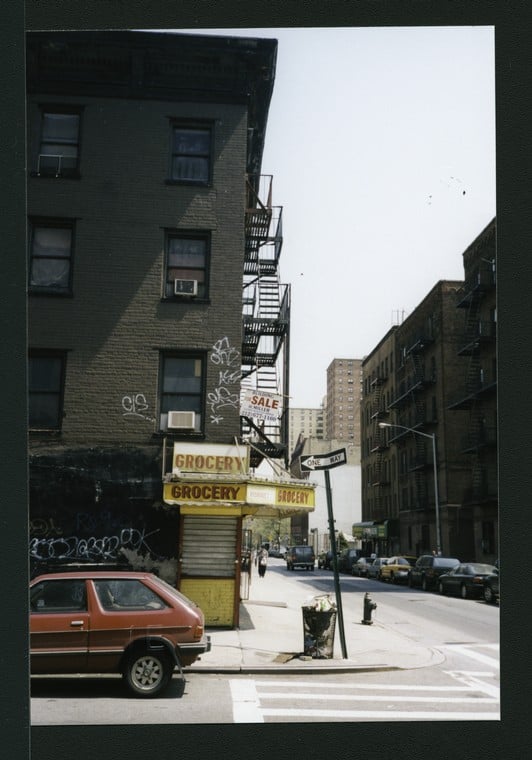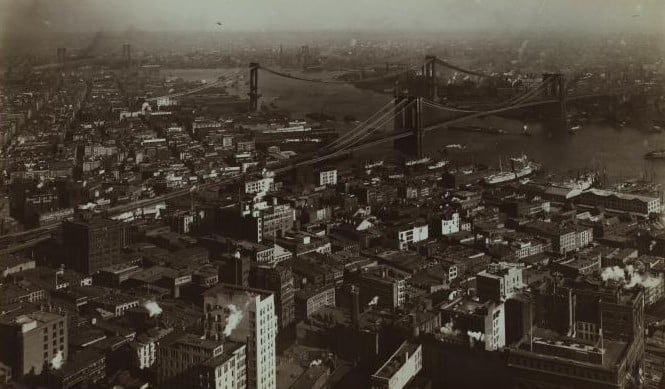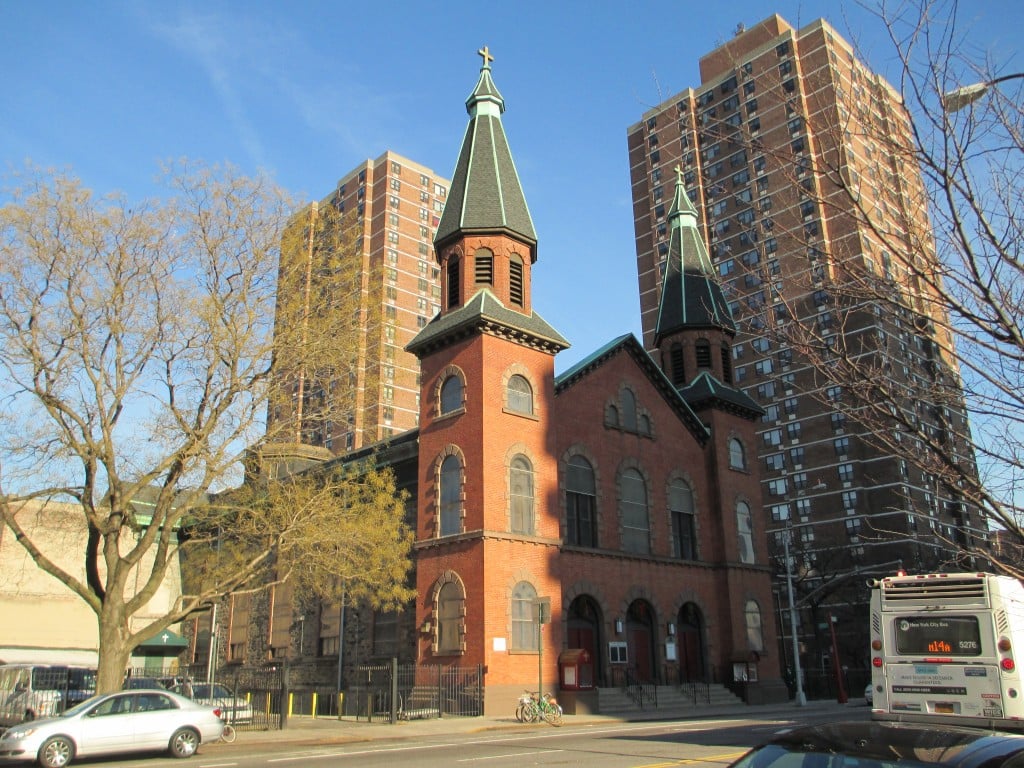Blog Archive
The History of Lower East Side Architecture
March 24, 2015

What was once called “The Jewish Quarter” now the Lower East Side. Sociologist and photograph by Lewis W. Hine in 1912. Photograph courtesy of the New York Public Library.
The American Institute of Architects, in its Guide to New York City, has this to say about Lower East Side architecture: “Far more significant historically than architecturally, this area harbors the legions of tenement buildings that warehoused the wave of homeless, tempest-tost immigrants who arrived here from the 1880s up to World War I.”
Oy. Where to begin.
First, there were many immigrants (and tenements) on the Lower East Side before 1880. Our tenement at 97 Orchard Street, for example, was built in 1863, and it isn’t even the oldest tenement on Orchard Street!
Second, immigrants are not inventory, and their homes are not warehouses! Despite the (many) design flaws of a typical Lower East Side tenement, these were still home for the tens of thousands of immigrants who passed (and continue to pass) through this neighborhood. Indeed, the surfeit of detailing in Lower East Side buildings, though mass-produced, spoke to the aspirations of these immigrants: they wanted to live in buildings that mimicked the look of middle-class homes in other neighborhoods.
The Lower East Side: More Than Just Tenements
And third, there’s so much more to the history of Lower East Side architecture than just tenements. For example, walk with me down Grand Street and sit by my side on one of the benches in front of one of the tall apartment buildings near Ridge Street. Crane your neck and look at the building behind us. This is one of three apartment towers built by Grand Street Guild in 1973 as affordable housing for low-income neighborhood residents. The buildings may seem nondescript, but the history behind them is not.

Buildings of all kinds on the Lower East Side. This shot was taken of Houston Street in 1999. Almost every block has seen changes in the past decade. Photograph by Dylan Stone courtesy of the New York Public Library.
Here’s that story: In 1962 this was a neighborhood in turmoil. Government bulldozers had demolished block after block of aging Lower East Side tenements, row houses, and cast-iron commercial buildings in the name of urban renewal. Neighborhood residents – often poor, often minority – were displaced by the thousand. In the middle of this devastation stood the church to our left, St. Mary’s, one of the oldest and most storied parishes in New York City. Its pastor, Thomas J. Keogh, saw in this devastation an opportunity. His parish had been shrinking as a result of urban renewal, but if he could marshal his parish’s considerable human resources, maybe together they could build new housing for some of the displaced neighborhood residents. Msgr. Keogh, along with dozens of other neighborhood volunteers, founded the Grand Street Guild Corporation to sponsor the construction of the housing behind us today. Initially they wanted to build a mix of low-rise apartments and townhouses.
After the City took back much of the land for a public housing project, they settled on the three towers around us today. These towers were never “Catholic-only,” but Msgr. Keogh hoped that the connection between the church and the towers would encourage at least some neighborhood Catholics to remain on the Lower East Side and stay involved with St. Mary’s Church. The connection to the Catholic Church continues to the present: Catholic Charities New York was instrumental in winning a $50 million grant from the federal government for the full renovation of these towers last year. In exchange for this federal grant, Grand Street Guild promises to keep the towers affordable for another 40 years (not that they would ever do otherwise).
Preserving the Stories Behind Lower East Side Architecture
At the Tenement Museum we believe that every immigrant’s story is worth telling. An immigrant’s story doesn’t matter less just because they were poor or didn’t speak English or never became a celebrity. Similarly, a building’s story doesn’t matter less just because its architecture wasn’t influential and nobody famous slept there.
And we don’t embrace these stories just for storytelling’s sake. Every generation reshapes its built environment in its own image. We demolish or alter some old buildings while preserving and restoring others. Some plans get built, others are shelved forever. When we discover the stories of these old buildings, we’re also uncovering truths that empower us to better shape the built environment we want for ourselves and our children.

An aerial view of the Lower East Side from 1910. To see how the landscape has changed and how it has stayed the same book yourself a spot on our Building on the Lower East Side walking tour. Photo courtesy of the NYPL.
That’s why I’ve created the Museum’s newest walking tour, Building on the Lower East Side. It’ll be an architectural walking tour, but the focus isn’t on Federal versus Greek revival, or Beaux-Arts versus Neoclassical. This tour visits many different buildings on the Lower East Side, including the Grand Street Guild towers, the soaring glass Blue condominium, the old Anshe Chesed synagogue, and much more. But we’ll also discuss the people who shaped these places — people like Msgr. Keogh and his many church volunteers, people who wanted to build a Lower East Side they would feel glad to call home. A building is just brick and mortar, steel and wood, glass and iron – it’s the stories behind these buildings that make them relevant and even revelatory.
–Posted by Adam Steinberg, Senior Education Associate
